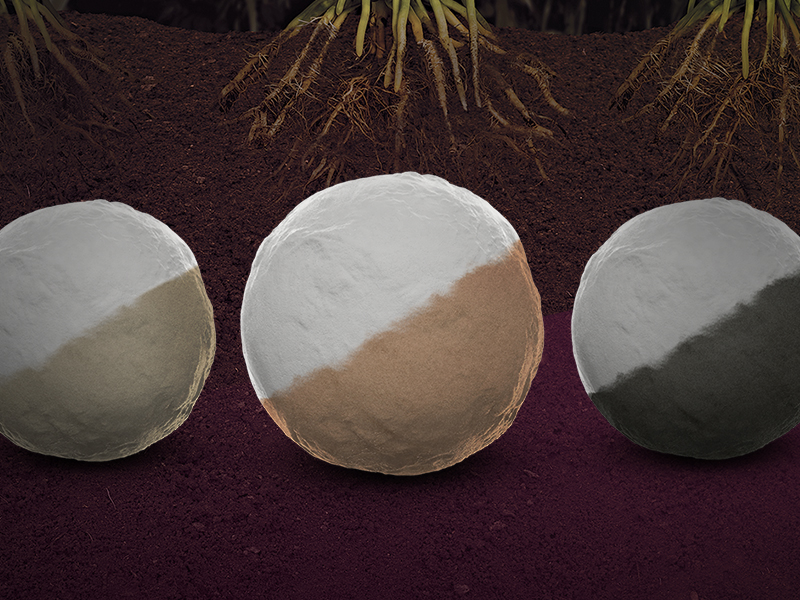Nitrogen Applications After The Warm Winter
Because of the unusually warm winter, many people who applied anhydrous ammonia last fall are concerned that they might have lost some of their nitrogen, according to University of Illinois assistant professor of crop sciences Fabián Fernández.
“Nitrogen transformations and losses depend on many variables and complex interactions,” said Fernández, “including soil temperature, time of fall-nitrogen application, use of a nitrification inhibitor, rate of biological activity, drainage, amount and frequency of rain, and soil type.”
Fernández says that it is first necessary to estimate how much of the applied nitrogen has been transformed to nitrate. “When anhydrous ammonia is applied, it reacts with soil water to convert to ammonium,” he explained. “In this form, nitrogen is held by the soil and cannot be leached out of the root zone or denitrified. However, once ammonium transforms to nitrate, it can be leached out with rainwater moving through the soil profile or denitrified when soils are warm and saturated with water.”
The bacteria that mediate nitrification are most active at warm temperatures (above 50°F) when the soil is not saturated with water. When the soil temperature is below 32°, nitrification does not occur.
Daily minimum soil temperatures at four inches below the soil surface ranged from 35.7° to 45°F in Champaign during January and February.
“The fact that temperatures never reached 32° suggests that nitrifying bacteria have remained active most of the fall and winter,” said Fernández.
Champaign soil temperatures were also relatively constant last winter, with average daily fluctuations of 2.2°F when minimum soil temperatures in the field were below 39°. These conditions would not produce a substantial lag in bacterial activity from day to day. Fernández said that similar conditions existed in other parts of Illinois.
A study in Illinois on the effects of N-Serve, a nitrification inhibitor, showed that 90% of the ammonium in Drummer soil (high organic matter content) and 85% in Cisne soil (low organic matter content) was not transformed to nitrate after 90 days at an incubation temperature of 39°F. When N-Serve was not used, the numbers were 60% and 25% after 90 days for Drummer soil and Cisne soil, respectively. The study also showed that N-Serve degradation increased as temperatures rose, which could increase nitrification.
In addition to nitrification, possible nitrogen loss must be considered. Nitrogen is not lost when ammonium is transformed to nitrate, but the potential for loss is greater.
“While it is possible that some of the nitrogen that transformed to nitrate over the winter was lost, I suspect that this is not a large amount,” said Fernández. “First, if the fall application was done carefully, a small amount of the total nitrogen, 10-20%, is likely to be in the nitrate form. Second, there has not been a lot of water in the soil to move nitrate down the soil profile or to create saturated conditions for denitrification.”
At the start of last fall, soils were very dry and needed to be replenished before water could move down the soil profile. Moreover, while most soil surfaces were not frozen and water was able to enter the soil, rainfall since last fall has been moderate.
Warm temperatures have also created some water evaporation in the soil surface. This evaporation creates an upward suction force that moves water and nitrate surface of the soil.
“While I am not too concerned about nitrogen loss at present, I am concerned about the potential for loss later in the spring,” Fernández said.
“Nitrogen losses usually occur in the spring when there is too much water, too little evapotranspiration, low nitrogen uptake by the crop, and nitrogen is present in nitrate form.”
If the spring is wet, Fernández said, there might be substantial loss from nitrogen applied in the fall. However, he advises against applying any additional nitrogen “until we have a better idea on how the crop is growing.”
Current soil conditions in many fields are fit for applying anhydrous ammonia. Nitrogen applied now would be considered an early-N application, and the potential for wet conditions and chance for high N-loss is still ahead of us if the spring is wet.
Fernández suggests using the N-rate calculator to determine the total amount of nitrogen in the field.
“Then I would apply only a portion of the total nitrogen, reserving the remainder for an application closer to planting or during sidedress,” he explained. “At this time, I would consider using only anhydrous ammonia or a slow-release nitrogen source.”
His final recommendation is to consider using N-Serve for anhydrous ammonia applications done this early in the spring, even though N-Serve for pre-plant applications is not usually applied close to normal planting time.






